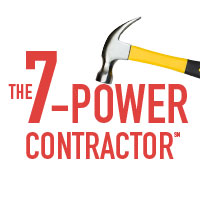Columns
A strong reward system can keep your installers and techs on time.
Read More
Kids and mechanical malfunctions
Could they be the cause of your mechanical malfunctions?
February 20, 2014
Greening the heating industry
Geothermal and solar thermal installs continue to rise.
January 23, 2014
Top nine direct mail mistakes
Make these marketing pieces work for you to increase sales leads.
January 23, 2014
Mediocrity: The business growth killer
Why do certain companies seem to grow and prosper while others constantly struggle?
January 23, 2014
Residential construction on an upswing
Lack of skilled labor is an issue for many industries.
January 23, 2014
Stepping over dollars to pick up dimes
The urge to save money can cause you to miss out on making more in return.
January 23, 2014
Keep your content unclogged with our newsletters!
Stay in the know on the latest plumbing & piping industry trends.
JOIN TODAY!Copyright ©2024. All Rights Reserved BNP Media.
Design, CMS, Hosting & Web Development :: ePublishing
















